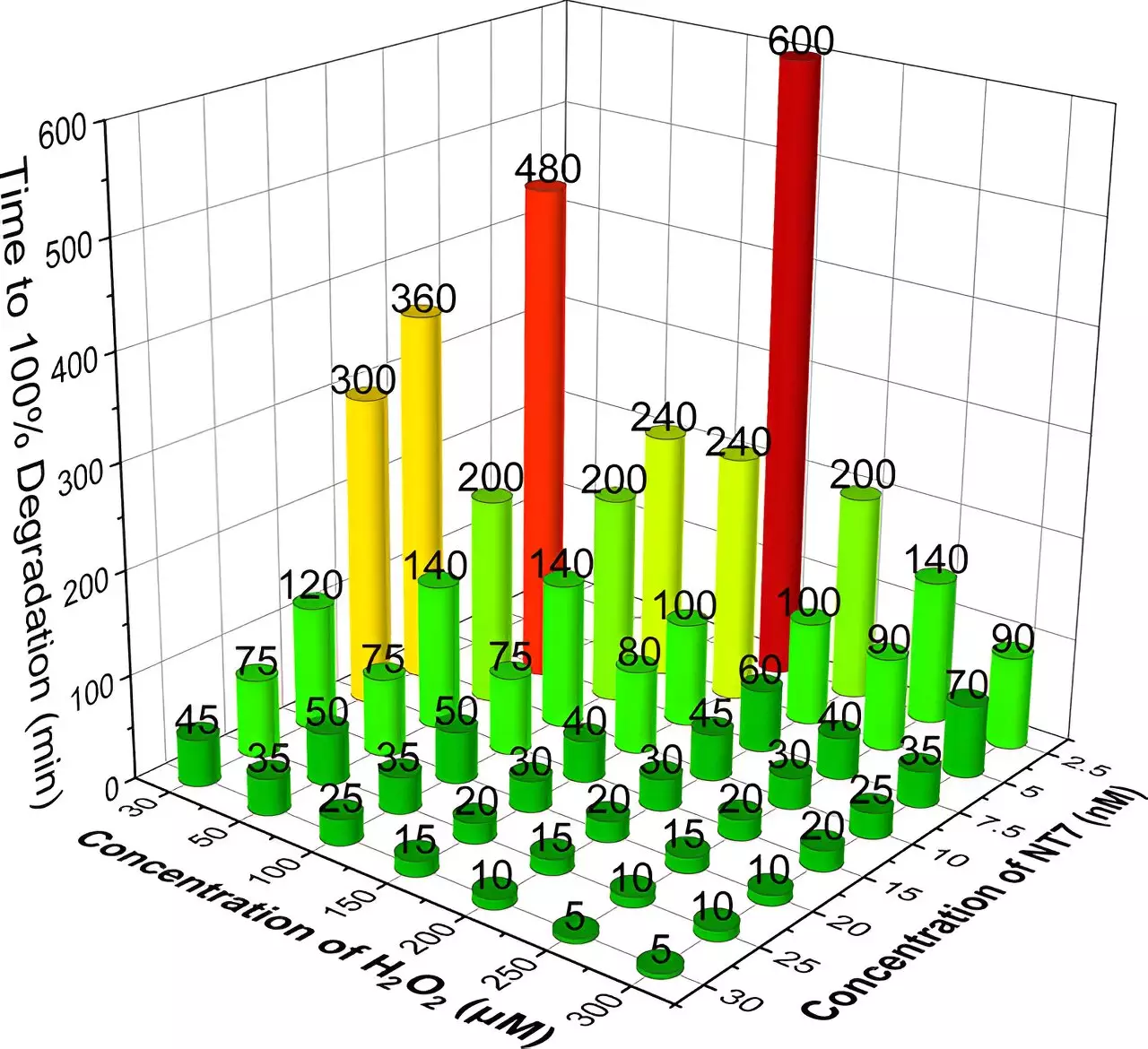The increasing prevalence of pharmaceuticals in natural water bodies poses a significant environmental challenge that threatens both ecosystems and human health. Over the years, comprehensive studies have demonstrated that trace amounts of pharmaceuticals, especially antibiotics, hormones, and anti-inflammatory drugs, have found their way into our water supplies due to improper disposal methods and failures in wastewater treatment processes. This struggle with chemical micropollutants, which elude conventional water purification techniques, calls for innovative solutions to mitigate their effects on wildlife and possibly human populations.
Scientists at Carnegie Mellon University have pioneered a promising method that addresses this pressing issue. By utilizing a novel TAML (Tetra-Amino-Macrocyclic Ligand) catalyst in conjunction with hydrogen peroxide, researchers have developed an environmentally friendly process capable of degrading a variety of pharmaceuticals found in municipal wastewater and contaminated surface waters. The method is not only cost-effective but also scalable, making it a practical solution for urban and rural water treatment facilities alike.
Terry Collins, a prominent figure in green chemistry and director of the Institute for Green Science at Carnegie Mellon, highlights the transformative potential of this process. He states that this innovative approach requires minimal quantities of the catalyst and hydrogen peroxide, significantly reducing operational costs and environmental impact. This efficiency, combined with the method’s low toxicity and broad applicability, positions it as a unique solution in the fight against water pollutants.
The catalyst at the center of this new process, known as NewTAML, functions by activating hydrogen peroxide at remarkably low concentrations, improving its ability to break down pharmaceutical contaminants. The TAML catalysts are bioinspired, reflecting a design drawn from natural enzymes. The research conducted revealed that NewTAML demonstrates heightened efficacy when used in dilutions far below those required by traditional methods, such as ozonation or activated carbon treatments, which are often expensive and complicated to maintain.
In laboratory conditions, NewTAML exhibited impressive results, effectively degrading multiple drugs commonly associated with environmental contamination. This includes four widely-used antibiotics, a synthetic estrogen, and a nonsteroidal anti-inflammatory drug. The findings from the tests showed a marked reduction in drug concentrations over a brief timeframe, often within hours, underscoring the process’s rapid efficiency.
The environmental implications of pharmaceuticals in water sources extend beyond mere contamination. Studies have indicated that these micropollutants can disrupt the hormonal systems of wildlife, leading to alterations in reproductive behaviors and population dynamics among aquatic species. The long-term exposure of aquatic organisms to these chemicals can culminate in severe ecological consequences, which ripple through the food web to affect other species, including humans.
The challenge lies in the fact that conventional wastewater treatment methods often fail to completely eliminate these micropollutants due to limitations in technology and capacity. Additional treatments, while effective, can present financial barriers, particularly in less affluent areas where resources for advanced water treatment systems are limited.
As the research progresses, the focus will shift toward field testing to validate the laboratory results under real-world conditions. With a provisional patent for the TAML/peroxide system secured and licensing agreements established with Sudoc, Inc., a startup devoted to commercializing the TAML technology, there is hope for a swift transition from laboratory efficacy to practical application.
Sudoc, Inc. has garnered significant financial backing, recently raising $20 million to launch the TAML-based treatment systems in the European market. The commercial interest in this approach signals a growing recognition of the need for robust solutions to the ongoing crisis of water contamination.
The advancements made by Carnegie Mellon University in developing a sustainable process to eliminate pharmaceutical contaminants from water are not merely a technological innovation; they represent a paradigm shift in how we approach water treatment. The integration of low-cost, efficient, and safe methods into existing infrastructures could significantly impact environmental health. With ongoing research and collaboration, the potential for TAML technology to play a critical role in safeguarding our water resources is immense, promising a cleaner, safer water future for generations to come.


Leave a Reply